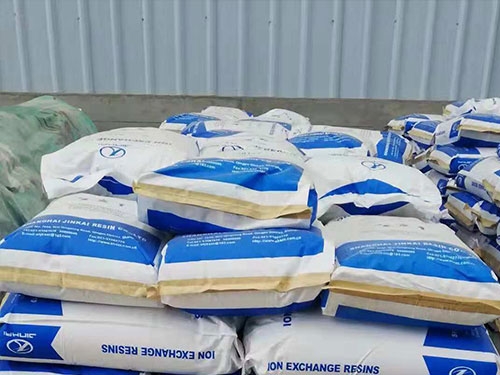成都森格尔环保科技有限公司
Chengdu senge environmental protection technology co.LTD
Consultation Hotline:02865357899
Production, Sales and Development of Ion Exchange Resin
成都森格尔环保科技有限公司
Chengdu senge environmental protection technology co.LTD
Consultation Hotline:02865357899
Production, Sales and Development of Ion Exchange Resin
Contact person: Manager Liu
Location: 028-65357899
Mobile phone: 15680686111
Mailbox: chengdu@sgrhb.com
Fax: 028-65357899
Email: chinaresin@sgrhb.com
Website: www.sgrhb.com
Website : en.sgrhb.com
Address: 79 Jiujin Street, Wuhou District, Chengdu City, Sichuan Province
The pollution of suspended solids, organic matters and oils should be avoided in the use of cation exchange resins. At the same time, the severe oxidation of cationic exchange resins by some wastewater should be avoided. Therefore, heavy metal ions should be removed before acidic oxidation wastewater enters cation exchange resin to avoid the catalytic effect of heavy metals on cation exchange resin. After each operation of the equipment, the wastewater in the AC column should be discharged back to the wastewater tank and soaked in tap water or purified water instead. Cation exchange resin should be regenerated in time after being full. After regeneration, it should not be immersed in the original solution for a long time. It should be washed out in time.

cation exchange resin
Whether cation exchange resin or anion exchange resin, when used for several cycles, the AC capacity will decrease. On the one hand, incomplete regeneration is used to reduce the capacity of cationic exchange resins, and a certain amount of ions which have not been regenerated accumulate gradually, which affects the normal exchange process; on the other hand, H2CrO4 and H2Cr2O7 in chromium-containing wastewater can oxidize cationic exchange resins, making more and more Cr3 + in cationic exchange resins and affecting cationic exchange. The normal operation of resin. Therefore, when the capacity of cation exchange resins is decreasing obviously, the activation of cation exchange resins should be carried out.
The activation methods of anion and cation exchange resins should be different according to the wastewater treated. There are successful experiences in the activation of anion and cation exchange resins for the treatment of chromium-containing wastewater in China. The principle of operation is as follows: After normal regeneration of cation-anion exchange resin, the resin is immersed in 2-2.5 mol//1H2SO4 solution, then slowly mixed and participated in NaHSO 3, and the Cr6+ on the cation exchange resin is reduced to Cr3+. The cationic exchange resin is immersed in the above solution for one day and night, then washed with clean water. The above process repeats 1-2 words, which can remove Cr6 + and Cr3 + from the cationic exchange resin, and then use NaOH to transform it to be used.
The main purpose of activation of cation exchange resin is to remove heavy metal ions accumulated on cation exchange resin, especially those high valent cations with strong binding force with cation exchange resin, such as Fe3+, Cr3+. It can be activated in vivo. The volume of cationic exchange resin can be doubled by the dosage of activating liquid. Now it is equipped with hydrochloric acid with concentration of 3.0 mol/1. It passes through the cationic exchange resin layer at regeneration flow rate, and then immerses the resin in sulfuric acid solution with concentration of 2.0-2.5 mol/1. It lasts for one day and night (at least 8 hours). Fe3+, Cr3 in the cationic exchange resin are immersed in sulfuric acid solution.+ Other heavy metal ions are basically removed, and cationic exchange resins can be used after elution.
Chengdu Senger Environmental Technology Co., Ltd.
Record No: 蜀ICP备19000327号
Powered by Xiangyun Platform
Contact person: Manager Liu
Location: 028-65357899
Mobile phone: 15680686111
Email: chinaresin@sgrhb.com

